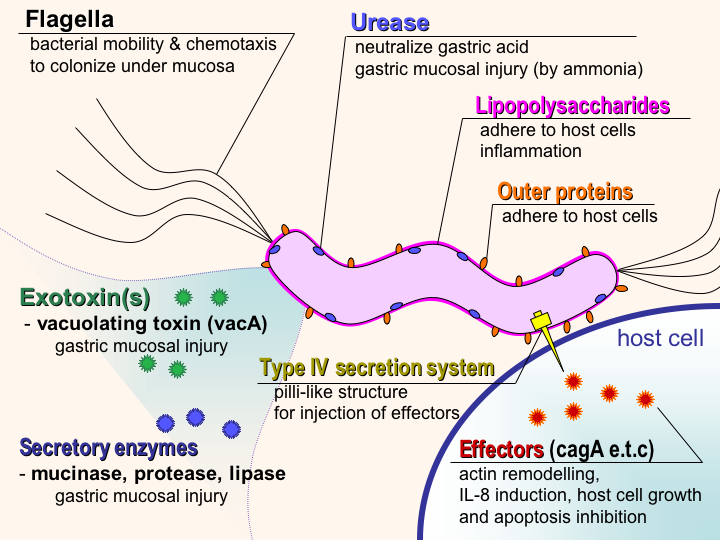6. Vita-mRNA MỚI ĐƯỢC PHÁT HIỆN TRÊN VI KHUẨN MỞ RA TIỀM NĂNG ỨNG DỤNG TRONG SẢN XUẤT VACCINE AN TOÀN THẾ HỆ MỚI.
Nature research letter June 16, 2011.
- Trong nghiên cứu đăng trên nature tháng 6 năm 2011, Sander và cộng sự đã công bố kết quả nghiên cứu phát hiện ra mRNA thông tin (stimulatory messenger RNA) trên vi khuẩn có khả năng kích thích hệ thống miễn dịch, mRNA này chỉ có ở các vi khuẩn còn sống mà không tìm thấy ở các vi sinh vật đã bị làm bất hoạt. Nhóm nghiên cứu của ông đặt tên chúng là vita-PAMP (viability-associated PAMP) có thể tạm dịch là các yếu tố sống có khả năng gây đáp ứng miễn dịch bẩm sinh và kích thích mạnh mẽ đáp ứng miễn dịch nhớ. Nghiên cứu này đã mở ra một tiềm năng to lớn trong việc khắc phục tác dụng phụ của vaccine sống (live vaccine) và cho phép sự kết hợp một cách hiệu quả và dễ dàng tiềm năng kích thích miễn dịch thể dịch với các vaccine bất hoạt (dead vaccine) vốn rất an toàn cho tiêm chủng.

Hình 1: Các yếu tố gây đáp ứng miễn dịch của vi khuẩn gây bệnh
- Hệ thống miễn dịch bẩm sinh (The innate immune system) có khả năng nhận diện các phân tử có nguồn gốc từ các vi sinh vật gây bệnh (PAMPs-pathogen-associated molecular patterns) thông qua sự khác biệt quan trọng giữa tế bào chủ và tế bào vi sinh vật (discriminate self from non-self structures). Tuy nhiên nghiên cứu được tiến hành bởi nhóm các nhà khoa học từ US và Pháp đã chỉ ra một cơ chế tương tự sảy ra trong tế bào cho phép nhận diện sự khác biệt trong đáp ứng miễn dịch đối với các thành phần sống và không sống trong vi sinh vật gây bệnh.
Các đặc điểm của vita-mRNA có thể được tóm tắt như sau:
1. Chỉ tìm thấy ở các vi sinh vật sống, khi vi sinh vật bị bất hoạt bởi nhiệt hoặc là các chất hóa học, mRNA này cũng bị phân hủy.

Hình 2: Nhân tố tạo ra sự khác biệt là RNA, không phải DNA hay LPS, và cụ thể là mRNA ko phải rRNA hay sRNA, chúng ko có trình tự đặc trưng nhưng cấu trúc có vai trò quan trọng.
2. Khi xử lý ở môi trường tế bào nuôi cấy, chúng có thể đi vào tế bào thông qua thực bào cùng với các thành phần khác của vi khuẩn (phagocytosis)

Figure 3: Bacterial RNA is a vita-PAMP that accesses cytosolic receptors during phagocytosis and in the absence of virulence factors.
3. vita-mRNA có bản chất là messenger RNA hay RNA thông tin, điểm khác biệt giữa chúng với mRNA của vật chủ là không có đuôi poly A ở đầu 3' và mũ cap 5', tuy nhiên cơ chế ảnh hưởng của chúng có thể do khả năng hình thành cấu trúc bậc 2 secondary structure freely.
4. vita-mRNA kích thích hệ thống miễn dịch bẩm sinh thông qua hoạt hóa inflammasome (phụ thuộc caspase 1) để tạo ra các cytokines tiết như IL1 bete, IFN type 1.
5. vita-mRNA kích thích đáp ứng miễn dịch nhớ nhưng tạo ra rất ít polyclonal IgM nhưng switch class IgG lại chiếm ưu thế.
If you are interested in this issue, please refere to this English introduction and nature articles below.
Best regard,
MEOCON 2011
Where there's life there's a PAMP
Nature.com June 16, 2011
[The innate immune system targets PAMPs (pathogen-associated molecular patterns) — invariant molecules crucial to the composition of microbial cells but absent from host tissues — to discriminate self from non-self structures. Now, a similar mechanism has been implicated in determining the differences in the immune response to viable and dead pathogens. Sander et al. identify stimulatory messenger RNA, present in live but not dead bacteria, as a viability-associated PAMP, or vita-PAMP. By incorporating vita-PAMPs in vaccines, it might be possible to combine the efficacy of a live vaccine with the safety associated with dead vaccines.
Live vaccines have long been known to trigger far more vigorous immune responses than their killed counterparts. This has been attributed to the ability of live microorganisms to replicate and express specialized virulence factors that facilitate invasion and infection of their hosts. However, protective immunization can often be achieved with a single injection of live, but not dead, attenuated microorganisms stripped of their virulence factors. Pathogen-associated molecular patterns (PAMPs), which are detected by the immune system, are present in both live and killed vaccines, indicating that certain poorly characterized aspects of live microorganisms, not incorporated in dead vaccines, are particularly effective at inducing protective immunity. Here we show that the mammalian innate immune system can directly sense microbial viability through detection of a special class of viability-associated PAMPs (vita-PAMPs). We identify prokaryotic messenger RNA as a vita-PAMP present only in viable bacteria, the recognition of which elicits a unique innate response and a robust adaptive antibody response. Notably, the innate response evoked by viability and prokaryotic mRNA was thus far considered to be reserved for pathogenic bacteria, but we show that even non-pathogenic bacteria in sterile tissues can trigger similar responses, provided that they are alive. Thus, the immune system actively gauges the infectious risk by searching PAMPs for signatures of microbial life and thus infectivity. Detection of vita-PAMPs triggers a state of alert not warranted for dead bacteria. Vaccine formulations that incorporate vita-PAMPs could thus combine the superior protection of live vaccines with the safety of dead vaccines]
Tài liệu tham khảo.
1. http://www.bioportfolio.com/news/art...-Immunity.html
2. http://www.nature.com/nature/journal...ture10072.html




.jpeg)
0 comments:
Post a Comment